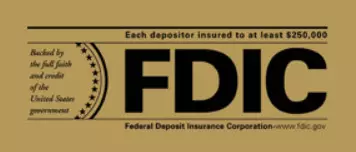
Helping children learn about money and financial matters will set them up for better financial health as they become adults. Learning about what banks do, why they are important, and how the FDIC keeps their money safe will help them build trust and confidence in the nation’s financial system.
This packet includes nine chapters to introduce basic banking terms to children, who are perhaps just beginning to learn about finances. Each chapter builds upon the next, so it is important to go through them in order. The chapters introduce two characters for students to relate to, Isabella and Noah, who try out these different concepts along the way. The topics include:
- Chapter 1: What Is a Bank?
Why should I keep my money there? - Chapter 2: Goals and Saving
Why are they important? - Chapter 3: Budgeting and Shopping
How can I spend wisely? - Chapter 4: Sharing as Part of the Plan
Can my savings goal help my community too? - Chapter 5: Compound Interest
What is it and how does it work? - Chapter 6: Careers and Pay
How can I earn money? - Chapter 7: Loans and Credit
When should I borrow money? - Chapter 8: Small Business
Can I work for myself? - Chapter 9: Money and Banking Overview
What did I learn?
We have provided some activities and ideas to engage with students and encourage a conversation about money and banking to help them build healthy financial habits and awareness.

Each chapter of Money Smart News for Kids asked questions that will help start conversations about money. You may want to start with those or expand on those questions. For other ideas on money conversations, you might find the following useful:
- Share a picture of the FDIC logo, which should be visible in the bank or on the website to show it is insured. The FDIC promotes public confidence by insuring deposits in banks for at least $250,000.
- Play a game and see how many FDIC signs you can spot inside the bank.
- Talk about different accounts. You might show them examples of blank checks, deposit slips, and an ATM or debit card. Explain that just because checks and cards are available, it doesn’t mean that money is available to spend.
- Discuss some things you may be saving for and how long you think it will take to save enough to buy them.
- Go on a field trip to your local bank and help them set up a savings account of their own.
- Make a game of saving. Come up with creative ways to save money like planting a garden for vegetables or reusing items like zip lock bags. Give out prizes like the Goofiest Way to Save or the Best Saver Ever.
- Using the grocery advertisements and a set amount of money, go on a shopping scavenger hunt. See what kinds of meals you can make for a set amount of money for a week.
- Name That Job or Career: Play a game to see how many different jobs or careers the students can name based on people and places you describe.
- Have the child choose five to ten careers that interest them in your local area. Have them research the education requirements and salary earning potential for each career.
- Set up a Business Idea suggestion box.
For detailed lesson plans, teachers’ guides, and activities on money and banking, visit: FDIC Money Smart for Young People. For more activities, check out the Consumer Financial Protection Bureau: Comparing Places to Save Money.
If you prefer to start your discussions about money and savings by reading with your child, you can visit the following websites for books that will spark discussions:
